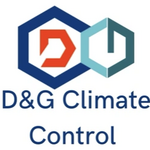Posted by: @derek-mPosted by: @goodyI am green with envyPosted by: @skdYes definitely. Excellent piece of kit so far, now nearing first full yesr of service. Not troubled at all by -8degC, snow, freezing fog etc recently.Posted by: @bensebJust to add, I’ve found my Ecodan excellent in this cold snap. It’s not faultered once and has kept us nice and warm.
So if you can get the install and commissioning sorted, you can be reassured the actual heat pump is good (as long as corrrctly specced)
I originally thought , 'great save the planet etc' now Putin is trying to destroy the planet - the energy crisis and the recent ' cold snap' has made me aware that all is not efficient with our heating system and it could be costing me an arm and a leg!
I may be wrong, but I think that the technical term for your heating system is 'Pig's Ear'. 😋
The other thing that I forgot to mention is that if your 'calculated' heat loss at -3C is 8.1kW, then an 8.5kW heat pump is going to struggle below that temperature, even without a buffer tank or low loss header. Sorry to be the bearer of glad tidings.
I second what Derek says. The other thing to think about defrosting. Your ASHP is working near its theoretical limit in these low temperatures. If it's like mine (also an Ecodan) it will be defrosting every hour or so and this will reduce its output quite a lot. Its average flow temp won't be what it is set at because it will drop every time a defrost happens. There is also every chance it is never reaching the set flow temp, even momentarily, between defrosts because there isn't enough time before the next one happens.
A lot of users find that ufh downstairs tends to heat upstairs without much help from radiators. Have tried lowering the flow temp and allowing downstairs to get nice and warm and seeing if that warms up upstairs without the high flow temps you are running with now?
Posted by: @goodyThe pipework run is around 3 metres with insulated pipe from pump to house up the house wall, however, since I posted I am thinking of getting some metal boxing and inulating the pipework more, as I can see metal valves uninsulated, and thinking about the workmanship i do not think it is insulated enough and now wondering if this could be a big big loss as I am typing...hmmm..
Since the Mitsubishi contractor telling me to ignore the weather compensation it is now on around 55C alteredfrom 58C last week. Heroes Ren told me to keep it at 48C....
Your positioning sounds fine. I would look to see if you have a full heat loss survey report as a pdf or an Excel document, then we could compare your radiators to the heat loss of the rooms.
Insulating the pipe work further with UV stable insulation is a reasonable idea, but you must make sure you do not insulate over any freeze protection valves you may have. These are probably brass coloured and T shaped with the bottom of the T just being a hole. If you have glycol in your system you probably won't have these.
On the weather comp I would enable it again, just with the coldest outside temp being at 55C flow temp, and try something like 15C outside at 35C. If you don't enable it you'll have higher than expected bills when it's warmer than it was last week.
That's a disgraceful approach from the installer IMHO. MelCloud gives the user access to useful data about consumption values, graphical trends, system and outdoor temperatures etc, just to mention a few. Not using it for control is no excuse to steer the owner away from it.Posted by: @goodyI was never shown how to use MelCloud as the installer said it work differently, due to us keeping our exisiting radiator heating controls- 7 x Drayton Wiser radiator valves and underfloor heating controls- 5 x wired roomstatsPosted by: @skdAre you using MelCloud? If so, you can select the flow and return temperature curves (in Reports, select Hourly Temperatures) and you can see if your actual flow temperatures are achieving the desired set point.
Do you have the wifi interface, that enables remote access? If you do then you can still download and set up the MelCloud app if you want to. There are some helpful tutorials on youtube.
Mitsubishi Ecodan 11.2kW R32 ASHP; Ecodan DHW cylinder; UFH+rads
20x430W Jinko TOPCON Tiger Neo solar; Luxpower 6+4kW hybrid inverter; 20kWh LFP battery storage
PHEV; Zappi charger
Posted by: @skdIf you do then you can still download and set up the MelCloud app if you want to.
No need to download anything. A web version is available at https://app.melcloud.com/
Going back to some things written earlier: 600kWh so far this month is not outrageously high for an upgraded 1930s home IMO (ASHP gets expensive in subzero), although it is a bit more than I'd expect from what I've seen (including our own upgraded 1980s one), but it is outrageous if it's not keeping you warm enough! Our 8.5kW unit does, happily.
Oil may have been the cheapest fuel last week at 85p/litre average, but it's already now up to 95p/l. We never knew what we'd be paying once we had enough space to accept a minimum order quantity. And it's a foul polluting fuel and we've got to stop burning stuff sooner or later...
Posted by: @goodyI was never shown how to use MelCloud as the installer said it work differently, due to us keeping our exisiting radiator heating controls- 7 x Drayton Wiser radiator valves and underfloor heating controls- 5 x wired roomstats
That, plus the words "controller installed in loft" on the schematic worry me. Are the Mitsubishi controls in the loft, or is the FTC panel somewhere else? If that's in the loft, I think you won't even be able to try the much-vaunted auto-adaptation mode (which has only just started working for me again in certain conditions, but others report success with it) without buying a Mitsubishi room temperature sensor (or control containing one). Corner-cutting muppets of installers! But weather-compensation should still be possible, even then, and the FTC seems pretty good at it.
As I understand it, the best approach with "foreign" controls like radiator valves is to use them only as protection against overheating a room, with the weather-compensation curve set to achieve and maintain the desired room temperature with the system balancing itself. The foreign controls shouldn't dictate the heat pump operation because they don't understand the Ecodan as well as its own controller. How much a Low Loss Header hinders the system balancing itself, I don't know.
Posted by: @oswiuInsulating the pipe work further with UV stable insulation is a reasonable idea...
You can get Class-O UV-stable pipe insulation from this link to BES.co.uk. Never mind that they label it for 'solar' thermal pipes.
For interior use, their equivalent Class-O pipe insulation is here.
Class O nitrile rubber has a closed cell construction. Any rain or water-leaks can't impregnate the insulation layer itself.
You can slit-it along the length to slide onto a pipe, and then close the slit by using a contact adhesive (eg Bostik or UHU). On exterior pipe runs you still ought to seal any corner joints using Armaflex tape to prevent ingress of rain. Otherwise it can run between the pipe and the insulation, draining heat from the system.
Save energy... recycle electrons!
Thanks. I just tried the web version and it views much better on a laptop screen than a phone.Posted by: @mjrPosted by: @skdIf you do then you can still download and set up the MelCloud app if you want to.
No need to download anything. A web version is available at https://app.melcloud.com/
Mitsubishi Ecodan 11.2kW R32 ASHP; Ecodan DHW cylinder; UFH+rads
20x430W Jinko TOPCON Tiger Neo solar; Luxpower 6+4kW hybrid inverter; 20kWh LFP battery storage
PHEV; Zappi charger
Our Ecodan system has an Ecodan cylinder with factory low loss header. We run entirely on weather compensation, with all radiator TRV's set to nearly max so they normally run fully open. Room and UFH zone stats are set high and are used for info only. Our UFH is run the same way. Rads have been balanced to support this running regime. Working well so far in this mode since last spring, including last week's cold snap. Manually tweaking the curve up and down at the FTC if needed is very easy (our controller is in the house).Posted by: @mjrPosted by: @goodyI was never shown how to use MelCloud as the installer said it work differently, due to us keeping our exisiting radiator heating controls- 7 x Drayton Wiser radiator valves and underfloor heating controls- 5 x wired roomstats
As I understand it, the best approach with "foreign" controls like radiator valves is to use them only as protection against overheating a room, with the weather-compensation curve set to achieve and maintain the desired room temperature with the system balancing itself. The foreign controls shouldn't dictate the heat pump operation because they don't understand the Ecodan as well as its own controller. How much a Low Loss Header hinders the system balancing itself, I don't know.
Mitsubishi Ecodan 11.2kW R32 ASHP; Ecodan DHW cylinder; UFH+rads
20x430W Jinko TOPCON Tiger Neo solar; Luxpower 6+4kW hybrid inverter; 20kWh LFP battery storage
PHEV; Zappi charger
Posted by: @oswiuPosted by: @goodyThe pipework run is around 3 metres with insulated pipe from pump to house up the house wall, however, since I posted I am thinking of getting some metal boxing and inulating the pipework more, as I can see metal valves uninsulated, and thinking about the workmanship i do not think it is insulated enough and now wondering if this could be a big big loss as I am typing...hmmm..
Since the Mitsubishi contractor telling me to ignore the weather compensation it is now on around 55C alteredfrom 58C last week. Heroes Ren told me to keep it at 48C....
Your positioning sounds fine. I would look to see if you have a full heat loss survey report as a pdf or an Excel document, then we could compare your radiators to the heat loss of the rooms.
Insulating the pipe work further with UV stable insulation is a reasonable idea, but you must make sure you do not insulate over any freeze protection valves you may have. These are probably brass coloured and T shaped with the bottom of the T just being a hole. If you have glycol in your system you probably won't have these.
On the weather comp I would enable it again, just with the coldest outside temp being at 55C flow temp, and try something like 15C outside at 35C. If you don't enable it you'll have higher than expected bills when it's warmer than it was last week.
The only heat loss calculation report I have is the one here:
I was going to see if someone made a box trunking for insulating the pipe further. We have chrome valves half way up the outside wall. I can not see any brass valves. I remember the glycol going in sas the installer spill about 5 gallons on the oak floor in our hallway! I was running around like a headless chicken mopping it up with dog towels etcs!
I ll go back to weather comp as you suggested, although the expected bills are alreasdy higher than expected!
Many thanks
Posted by: @transparentPosted by: @oswiuInsulating the pipe work further with UV stable insulation is a reasonable idea...
You can get Class-O UV-stable pipe insulation from this link to BES.co.uk. Never mind that they label it for 'solar' thermal pipes.
For interior use, their equivalent Class-O pipe insulation is here.
Class O nitrile rubber has a closed cell construction. Any rain or water-leaks can't impregnate the insulation layer itself.
You can slit-it along the length to slide onto a pipe, and then close the slit by using a contact adhesive (eg Bostik or UHU). On exterior pipe runs you still ought to seal any corner joints using Armaflex tape to prevent ingress of rain. Otherwise it can run between the pipe and the insulation, draining heat from the system.
It looks like the installers used something very simlar to this outside, but did not use anything at all as soon as it entered the outside wall and nothing at all inside the house. So would you recommend insulating all the pipework inside the house ?Posted by: @transparentPosted by: @oswiuInsulating the pipe work further with UV stable insulation is a reasonable idea...
You can get Class-O UV-stable pipe insulation from this link to BES.co.uk. Never mind that they label it for 'solar' thermal pipes.
For interior use, their equivalent Class-O pipe insulation is here.
Class O nitrile rubber has a closed cell construction. Any rain or water-leaks can't impregnate the insulation layer itself.
You can slit-it along the length to slide onto a pipe, and then close the slit by using a contact adhesive (eg Bostik or UHU). On exterior pipe runs you still ought to seal any corner joints using Armaflex tape to prevent ingress of rain. Otherwise it can run between the pipe and the insulation, draining heat from the system.
Thanks
-
Ecodan unable to hit legionella target temp - what's the consensus?
2 days ago
-
Mitsubishi Ecodan 11kw Defrosting Issue.
1 week ago
-
Ecodan consuming 100kwh per day in new build!!!
5 months ago
-
Efficiency Concerns on newly installed Mitsubishi Ecodan 8.5kW
8 months ago
-
Ecodan 11.2kw Wireless thermostat drop outs
8 months ago
- 26 Forums
- 2,356 Topics
- 53.4 K Posts
- 199 Online
- 6,017 Members
Join Us!
Worth Watching
Latest Posts
-
RE: Electricity price predictions
Ben Watts posted on LinkedIn that he had updated this w...
By Judith , 1 hour ago
-

RE: The good, the bad and the not that great – my heat pump installation
Small update, Emailed and Spoke to Midea UK and they ...
By Burtis , 2 hours ago
-
RE: Solis S6-EH1P8K-L-PLUS – Why I Chose It and What I’ve Learned So Far
@bash Octopus does charge for the admin. The process al...
By Batpred , 2 hours ago
-
RE: External pipework insulation
@transparent HI all The products you mention are ver...
By David Smith , 2 hours ago
-
RE: New Fogstar 15.5kWh upright solution
Issues still under investigation by Solis... Fogstar ...
By Batpred , 2 hours ago
-
RE: Who's your electricity provider and what's your tariff?
I agree, the consumer is not being properly represented...
By Batpred , 2 hours ago
-

RE: Controlling Daikin Altherma via P1P2 and Home Assistant
@weoleyric, apologies for the delay in response. Give...
By Majordennisbloodnok , 4 hours ago
-
RE: Octopus Cosy Heat Pump Owners & Discussion Thread
@harrisonc wow. That’s going to get the rumour mill gr...
By AndrewJ , 6 hours ago
-
RE: Advice on internal circulation pump noise
Thanks @mikefl - I'll maybe have a look at the lock-shi...
By jtg , 19 hours ago
-

RE: Heat Pump Heats the House… But It’s Not Cosy. Emitter Changes or System Tweak?
@toodles interesting suggestion, thanks. I will try to...
By GrahamF , 20 hours ago
-
RE: Mitsubishi Ecodan Auto Adaption trial to stop cycling.
The interval you talk of, i think, will be 60min for an...
By F1p , 23 hours ago
-
Agree with @majordennisbloodnok on the setbacks. We hav...
By ChandyKris , 2 days ago
-

RE: Speedcomfort radiator fans
@deltona the way the links were added broke the page. A...
By Mars , 2 days ago
-

RE: Setback savings - fact or fiction?
I agree! Even more so if we get an answer! But the chal...
By cathodeRay , 2 days ago
-

RE: Refrigerant R32, is it now banned in the EU from 1st Jan 2027 for monobloc ASHPs?
This has been delayed from what I believe to be this ye...
By dgclimatecontrol , 2 days ago
-
RE: Are We Sleepwalking Into Another Race to the Bottom?
this is why I provided current flow temperatures in the...
By ksim , 2 days ago
-

RE: Why Millions of UK Homes Struggle With Heat Pumps
There's many homes that would be quite a disruption for...
By dgclimatecontrol , 2 days ago
-
RE: Ecodan unable to hit legionella target temp - what's the consensus?
@rhh2348 ...maybe this option is what you want? Alter...
By benson , 2 days ago
-

RE: Free Ecoheat Heat Pump Install
@old_scientist This does make the unit smaller as the b...
By dgclimatecontrol , 2 days ago






